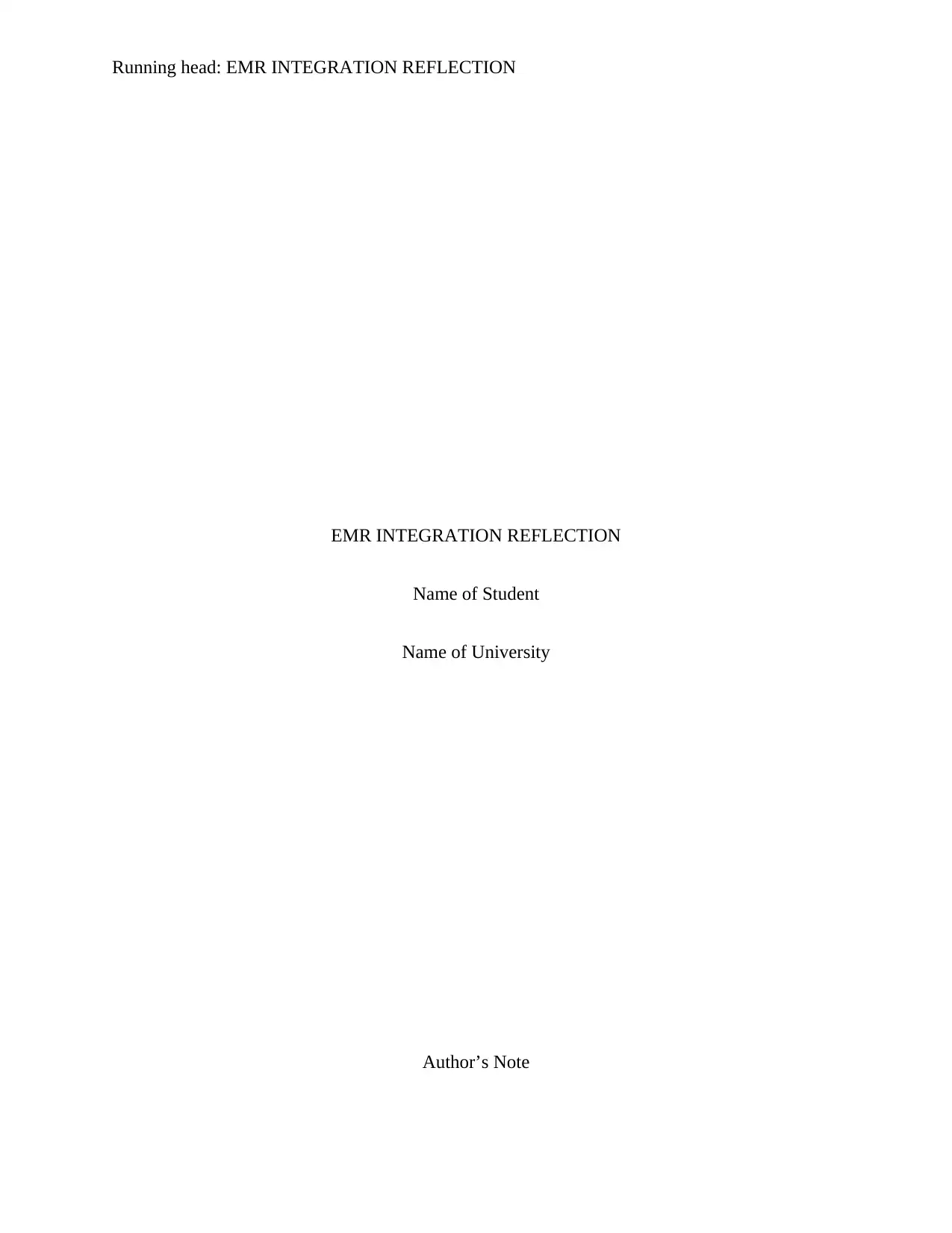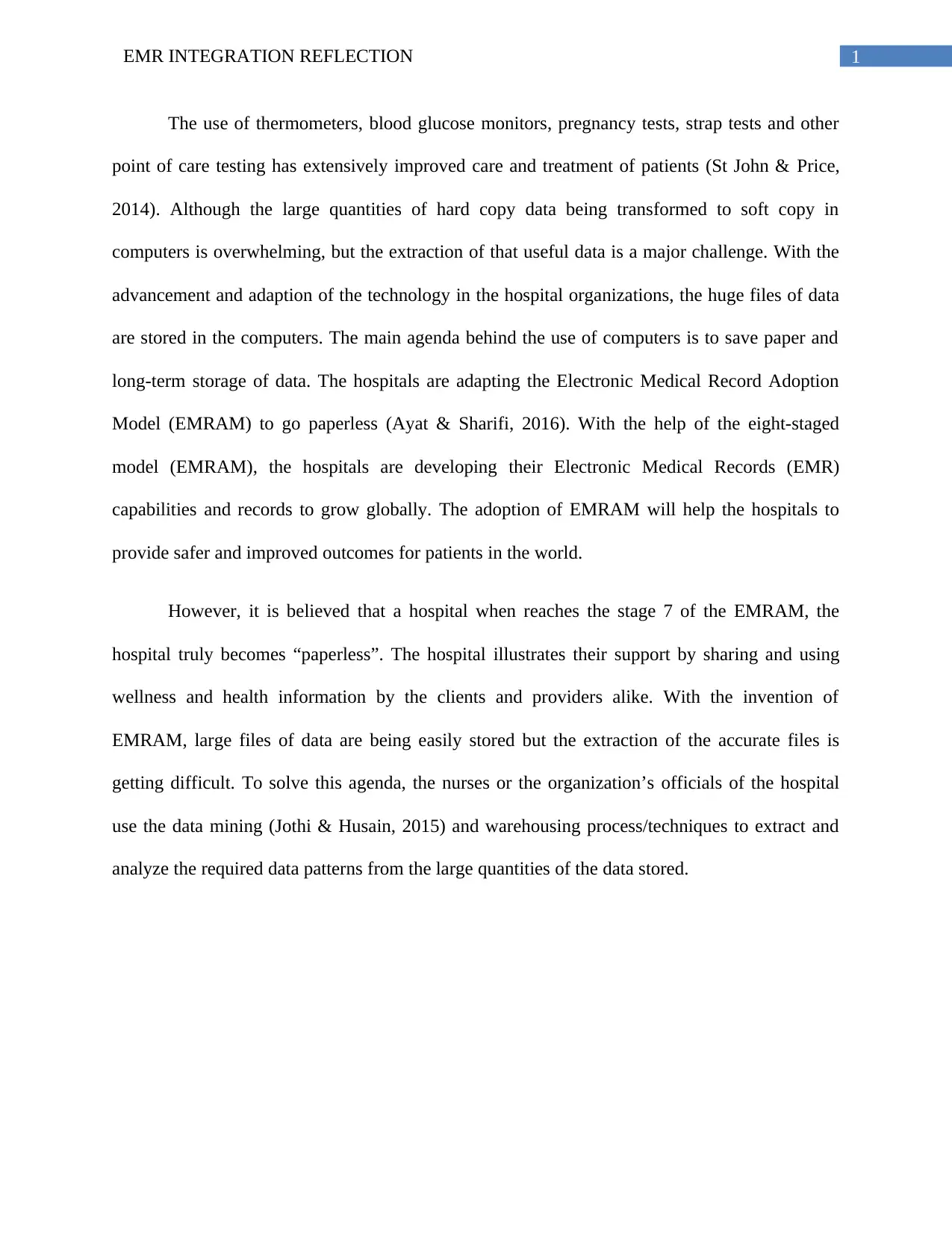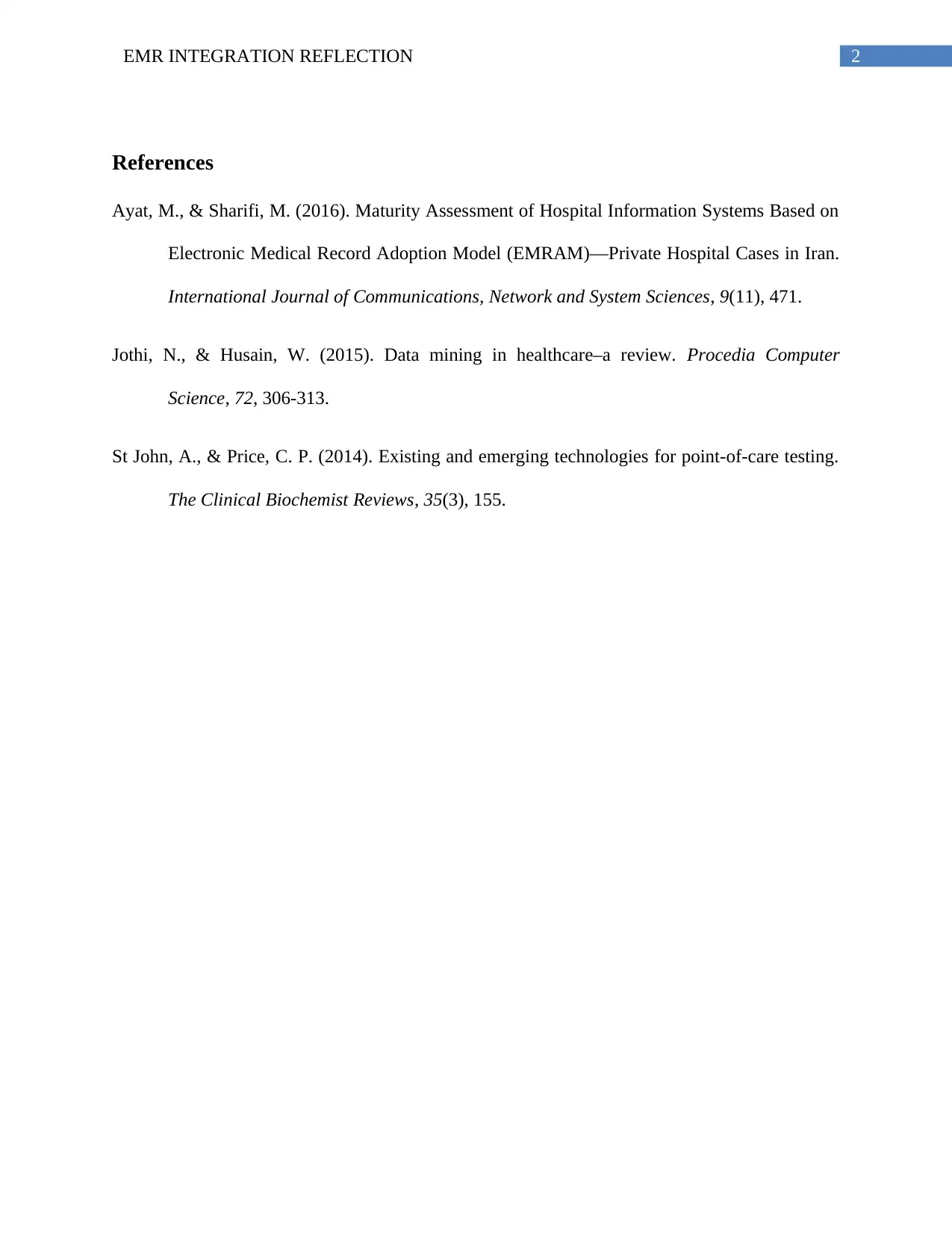EMR Integration Report - Course Name, Semester, and College Name
VerifiedAdded on 2022/11/16
|3
|438
|30
Report
AI Summary
This report examines the integration of Electronic Medical Records (EMR) in healthcare. It delves into the challenges of data management and analysis, highlighting the importance of EMR and the need for efficient data processing. The report discusses the role of the EMR system in providing better patient care and the need for data mining techniques to extract useful information. The report also mentions the use of the EMR system by the hospital and healthcare organizations. It underscores the significance of data management and the benefits of the EMR system and the adoption of the EMR system. It also acknowledges the challenges and the need for further research. The report also discusses the use of the EMR system by the hospital and healthcare organizations. The report references relevant research and provides a comprehensive overview of the topic.
1 out of 3




![[object Object]](/_next/static/media/star-bottom.7253800d.svg)